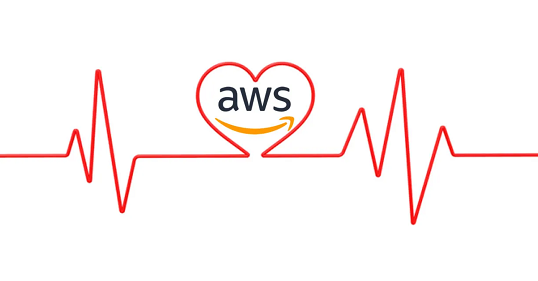Belitsoft is your Azure development partner when you need industry-aware engineers, real-time AI, and cloud solutions that work in healthcare, finance, insurance, manufacturing and logistics. Want your Azure plans to succeed? Call us. We bring the full stack - from containers to compliance.
Healthcare, financial services, insurance, logistics, and manufacturing all operate under complex, overlapping compliance and security regimes. Engineers who understand both Azure and the relevant regulations can design, implement, and manage architectures that embed compliance from day one and map directly onto the industry’s workflows.
Specialized Azure Developers
Specialised Azure developers understand both the cloud’s building blocks and the industry’s non-negotiable constraints. They can:
- Design bespoke, constraint-aware architectures that reflect real-world throughput ceilings, data-sovereignty rules and operational guardrails.
- Embed compliance controls, governance policies and audit trails directly into infrastructure and pipelines.
- Migrate or integrate legacy systems with minimal disruption, mapping old data models and interface contracts to modern Azure services while keeping the business online.
- Tune performance and reliability for mission-sensitive workloads by selecting the right compute tiers, redundancy patterns and observability hooks.
- Exploit industry-specific Azure offerings such as Azure Health Data Services or Azure Payment HSM to accelerate innovation that would otherwise require extensive bespoke engineering.
Evaluating Azure Developers
When you’re hiring for Azure-centric roles, certifications provide a helpful first filter, signalling that a candidate has reached a recognised baseline of skill. Start with the core developer credential, AZ-204 (Azure Developer Associate) - the minimum proof that someone can design, build and troubleshoot typical Azure workloads.
From there, map certifications to the specialisms you need:
- Connected-device solutions lean on AZ-220 (Azure IoT Developer Specialty) for expertise in device provisioning, edge computing and bi-directional messaging.
- Data-science–heavy roles look for DP-100 (Azure Data Scientist Associate), showing capability in building and operationalising ML models on Azure Machine Learning.
- AI-powered application roles favour AI-102 (Azure AI Engineer Associate), which covers cognitive services, conversational AI and vision workloads.
- Platform-wide or cross-team functions benefit from AZ-400 (DevOps Engineer) for CI/CD pipelines, DP-420 (Cosmos DB Developer) for globally distributed NoSQL solutions, AZ-500 (Security Engineer) for cloud-native defence in depth, and SC-200 (Security Operations Analyst) for incident response and threat hunting.
Certifications, however, only establish breadth. To find the depth you need—especially in regulated or niche domains - you must probe beyond badges. Aim for a "T-shaped" profile: broad familiarity with the full Azure estate, coupled with deep, hands-on mastery of the particular services, regulations and business processes that drive your industry.
That depth often revolves around:
- Regulatory frameworks such as HIPAA, PCI DSS and SOX.
- Data standards like FHIR for healthcare or ISO 20022 for payments.
- Sector-specific services - for example, Azure Health Data Services, Payment HSM, or Confidential Computing enclaves - where real project experience is worth far more than generic credentials.
Design your assessment process accordingly:
- Scenario-based coding tests to confirm practical fluency with the SDKs and APIs suggested by the candidate’s certificates.
- Architecture whiteboard challenges that force trade-offs around cost, resilience and security.
- Compliance and threat-model exercises aligned to your industry’s rules.
- Portfolio and GitHub review to verify they’ve shipped working solutions, not just passed exams.
- Reference checks with a focus on how the candidate handled production incidents, regulatory audits or post-mortems.
By combining certificate verification with project-centred vetting, you’ll separate candidates who have merely studied Azure from those who have mastered it - ensuring the people you hire can deliver safely, securely and at scale in your real-world context.
Choosing the Right Engineering Model for Azure Projects
Every Azure initiative starts with the same question: who will build and sustain it? Your options - in-house, off-shore/remote, near-shore, or an outsourced dedicated team - differ across cost, control, talent depth and operational risk.
In-house teams: maximum control, limited supply
Hiring employees who sit with the business yields the tightest integration with existing systems and stakeholders. Proximity shortens feedback loops, safeguards intellectual property and eases compliance audits. The downside is scarcity and expense: specialist Azure talent may be hard to find locally and total compensation (salary, benefits, overhead) is usually the highest of all models.
Remote offshore teams: global reach, lowest rates
Engaging engineers in lower-cost regions expands the talent pool and can cut labour spend by roughly 40 % compared with the US salaries for a six-month project. Distributed time zones also enable 24-hour progress. To reap those gains you must invest in:
- Robust communication cadence - daily stand-ups, clear written specs, video demos.
- Security and IP controls - VPN, zero-trust identity, code-review gates.
Intentional governance - KPIs, burn-down charts and a single throat to choke.
Near-shore teams: balance of overlap and savings
Locating engineers in adjacent time zones gives real-time collaboration and cultural alignment at a mid-range cost. Nearshore often eases language barriers and enables joint white-board sessions without midnight calls.
Dedicated-team outsourcing: continuity without payroll
Many vendors offer a "team as a service" - you pay a monthly rate per full-time engineer who works only for you. Compared with ad-hoc staff-augmentation, this model delivers:
- Stable velocity and domain knowledge retention.
- Predictable budgeting (flat monthly fee).
- Rapid scaling - add or remove seats with 30-day notice.
Building a complete delivery pod
Regardless of sourcing, high-performing Azure teams typically combine these roles:
- Solution Architect. End-to-end system design, cost & compliance guardrails
- Lead Developer(s). Code quality, technical mentoring
- Service-specialist Devs. Deep expertise (Functions, IoT, Cosmos DB, etc.)
- DevOps Engineer. CI/CD pipelines, IaC, monitoring
- Data Engineer / Scientist. ETL, ML models, analytics
- QA / Test Automation. Defect prevention, performance & security tests
- Security Engineer. Threat modelling, policy-as-code, incident response
- Project Manager / Scrum Master. Delivery cadence, blocker removal
Integrated pods also embed domain experts - clinicians, actuaries, dispatchers - so technical decisions align with regulatory and business realities.
Craft your blend
Most organisations settle on a hybrid: a small in-house core for architecture, security and business context, augmented by near- or offshore developers for scale. A dedicated-team contract can add continuity without the HR burden. By matching the sourcing mix to project criticality, budget and talent availability - you’ll deliver Azure solutions that are cost-effective, secure and adaptable long after the first release.
Azure Developers Skills for HealthTech
Building healthcare solutions on Azure now demands a dual passport: fluency in healthcare data standards and mastery of Microsoft’s cloud stack.
Interoperability first
Developers must speak FHIR R4 (and often STU3), HL7 v2.x, CDA and DICOM, model data in those schemas, and build APIs that translate among them - for example, transforming HL7 messages to FHIR resources or mapping radiology metadata into DICOM-JSON. That work sits on Azure Health Data Services, secured with Azure AD, SMART-on-FHIR scopes and RBAC.
Domain-driven imaging & AI
X-ray, CT, MRI, PET, ultrasound and digital-pathology files are raw material for AI Foundry models such as MedImageInsight and MedImageParse. Teams need Azure ML and Python skills to fine-tune, validate and deploy those models, plus responsible-AI controls for bias, drift and out-of-distribution cases. The same toolset powers risk stratification and NLP on clinical notes.
Security & compliance as design constraints
HIPAA, GDPR and Microsoft BAAs mean encryption keys in Key Vault, policy enforcement, audit trails, and, for ultra-sensitive workloads, Confidential VMs or SQL CC. Solutions must meet the Well-Architected pillars - reliability, security, cost, operations and performance - with high availability and disaster-recovery baked in.
Connected devices
Remote-patient monitoring rides through IoT Hub provisioning, MQTT/AMQP transport, Edge modules and real-time analytics via Stream Analytics or Functions, feeding MedTech data into FHIR stores.
Genomics pipelines
Nextflow coordinates Batch or CycleCloud clusters that churn petabytes of sequence data. Results land in Data Lake and flow into ML for drug-discovery models.
Unified analytics
Microsoft Fabric ingests clinical, imaging and genomic streams, Synapse runs big queries, Power BI visualises, and Purview governs lineage and classification - so architects must know Spark, SQL and data-ontology basics.
Developer tool belt
Strong C# for service code, Python for data science, and Java where needed; deep familiarity with Azure SDKs (.NET/Java/Python) is assumed. Certifications - AZ-204/305, DP-100/203/500, AI-102/900, AZ-220, DP-500 and AZ-500 - map to each specialty.
Generative AI & assistants
Prompt engineering and integration skills for Azure OpenAI Service turn large-language models into DAX Copilot-style documentation helpers or custom chatbots, all bounded by ethical-AI safeguards.
In short, the 2025 Azure healthcare engineer is an interoperability polyglot, a cloud security guardian and an AI practitioner - all while keeping patient safety and data privacy at the core.
Azure Developers Skills for FinTech
To engineer finance-grade solutions on Azure in 2025, developers need a twin fluency: deep cloud engineering and tight command of financial-domain rules.
Core languages
Python powers quant models, algorithmic trading, data science and ML pipelines. Java and C#/.NET still anchor enterprise back-ends and micro-services.
Low-latency craft
Trading and real-time risk apps demand nanosecond thinking: proximity placement groups, InfiniBand, lock-free data structures, async pipelines and heavily profiled code.
Quant skills
Solid grasp of pricing theory, VaR, market microstructure and time-series maths - often wrapped in libraries like QuantLib - underpins every algorithm, forecast or stress test.
AI & MLOps
Azure ML and OpenAI drive fraud screens, credit scoring and predictive trading. Teams must automate pipelines, track lineage, surface model bias and satisfy audit trails.
Data engineering
Synapse, Databricks, Data Factory and Lake Gen2 tame torrents of tick data, trades and logs. Spark, SQL and Delta Lake skills turn raw feeds into analytics fuel.
Security & compliance
From MiFID II and Basel III to PCI DSS and PSD2, developers wield Key Vault, Policy, Confidential Computing and Payment HSM - designing systems that encrypt, govern and prove every action.
Open-banking APIs
API Management fronts PSD2 endpoints secured with OAuth 2.0, OIDC and FAPI. Developers must write, throttle, version and lock down REST services, then tie them to zero-trust back-ends.
Databases
Azure SQL handles relational workloads. Cosmos DB’s multi-model options (graph, key-value) fit fraud detection and global, low-latency data.
Cloud architecture & DevOps
AKS, Functions, Event Hubs and IaC tools (Terraform/Bicep) shape fault-tolerant, cost-aware micro-service meshes - shipped through Azure DevOps or GitHub Actions.
Emerging quantum
A niche cohort now experiments with Q#, Quantum DK and Azure Quantum to tackle portfolio optimisation or Monte Carlo risk runs.
Accelerators & certifications
Microsoft Cloud for Financial Services landing zones, plus badges like AZ-204, DP-100, AZ-500, DP-203, AZ-400 and AI-102, signal readiness for regulated workloads.
In short, the 2025 Azure finance developer is equal parts low-latency coder, data-governance enforcer, ML-ops engineer and API security architect - building platforms that trade fast, stay compliant and keep customer trust intact.
Azure Developers Skills for InsurTech
To build insurance solutions on Azure in 2025, developers need a twin toolkit: cloud-first engineering skills and practical knowledge of how insurers work.
AI that speaks insurance
Fraud scoring, risk underwriting, customer churn models and claims-severity prediction all run in Azure ML. Success hinges on Python, the Azure ML SDK, MLOps discipline and responsible-AI checks that regulators will ask to see. Document Intelligence rounds out the stack, pulling key fields from ACORD forms and other messy paperwork and handing them to Logic Apps or Functions for straight-through processing.
Data plumbing for actuaries
Actuarial models feed on vast, mixed data: premiums, losses, endorsements, reinsurance treaties. Azure Data Factory moves it, Data Lake Gen 2 stores it, Synapse crunches it and Power BI surfaces it. Knowing basic actuarial concepts - and how policy and claim tables actually look - turns raw feeds into rates and reserves.
IoT-driven usage-based cover
Vehicle telematics and smart-home sensors stream through IoT Hub, land in Stream Analytics (or IoT Edge if you need on-device logic) and pipe into ML for dynamic pricing. MQTT/AMQP, SAQL and Maps integration are the new must-learns.
Domain fluency
Underwriting, policy admin, claims, billing and re-insurance workflows - plus ACORD data standards - anchor every design choice, as do rules such as Solvency II and local privacy laws.
Hybrid modernisation
Logic Apps and API Management act as bilingual bridges, wrapping legacy endpoints in REST and letting new cloud components coexist without a big-bang cut-over.
Security & compliance baked in
Azure AD, Key Vault, Defender for Cloud, Policy and zero-trust patterns are baseline. Confidential Computing and Clean Rooms enable joint risk analysis on sensitive data without breaching privacy.
Devops
C#/.NET, Python and Java cover service code and data science. Azure DevOps or GitHub Actions deliver CI/CD.
In short, the modern Azure insurance developer is a data engineer, machine-learning practitioner, IoT integrator and legacy whisperer - always coding with compliance and customer trust in mind.
Azure Developers Skills for Logistics
To build logistics apps on Azure in 2025 you need three things: strong IoT chops, geospatial know-how, and AI/data skills- then wrap them in supply-chain context and tight security.
IoT at the edge
You’ll register and manage devices in IoT Hub, push Docker-based modules to IoT Edge, and stream MQTT or AMQP telemetry through Stream Analytics or Functions for sub-second reactions.
Maps everywhere
Azure Maps is your GPS: geocode depots, plot live truck icons, run truck-route APIs that blend traffic, weather and road rules, and drop geo-fences that fire Events when pallets wander.
ML that predicts and spots trouble
Azure ML models forecast demand, optimise loads, signal bearing failures and flag odd transit times; Vision Studio adds barcode, container-ID and damage recognition at the dock or in-cab camera. When bandwidth is scarce, the same models run on IoT Edge.
Pipelines for logistics data
Factory or Synapse Pipelines pull ERP, WMS, TMS and sensor feeds into Lake Gen2/Synapse, cleanse them with Mapping flows or Spark, and surface KPIs in Power BI.
Digital Twins as the nervous system
Model fleets, warehouses and routes in DTDL, stream real-world data into the twin graph, and let planners run "what-if" simulations before trucks roll.
Domain glue
Know order-to-cash, cross-dock, last-mile and cold-chain quirks so APIs from carriers, weather and maps stitch cleanly into existing ERP/TMS stacks.
Edge AI + security
Package models in containers, sign them, deploy through DPS, and guard everything with RBAC, Key Vault and Defender for IoT.
Typical certification mix: AZ-220 for IoT, DP-100 for ML, DP-203 for data, AZ-204 for API/app glue, and AI-102 for vision or anomaly APIs.
In short, the modern Azure logistics developer is an IoT integrator, geospatial coder, ML engineer and data-pipeline builder - fluent in supply-chain realities and ready to act on live signals as they happen.
Azure Developers Skills for Manufacturing
To build the smart-factory stack on Azure, four skill pillars matter - and the best engineers carry depth in one plus working fluency in the other three.
Connected machines at the edge
IoT developers own secure device onboarding in IoT Hub, push Docker modules to IoT Edge, stream MQTT/AMQP telemetry through Event Hubs or Stream Analytics, and encrypt every hop. They wire sensors into CNCs and PLCs, enable remote diagnostics, and feed real-time quality or energy data upstream.
Industrial AI & MLOps
AI engineers train and ship models in Azure ML, wrap vision or anomaly APIs for defect checks, and use OpenAI or the Factory Operations Agent for natural-language guides and generative design. They automate retraining pipelines, monitor drift, and deploy models both in the cloud and on edge gateways for sub-second predictions.
Digital twins that think
Twin specialists model lines and sites in DTDL, stream live IoT data into Azure Digital Twins, and expose graph queries for "what-if" simulations. They know 3-D basics and OpenUSD, link twins to analytics or AI services, and hand operators a real-time virtual plant that flags bottlenecks before they hit uptime.
Unified manufacturing analytics
Data engineers pipe MES, SCADA and ERP feeds through Data Factory into Fabric and Synapse, shape OT/IT/ET schemas, and surface OEE, scrap and energy KPIs in Power BI. They tune Spark and SQL, trace lineage, and keep the lakehouse clean for both ad-hoc queries and advanced modelling.
The most valuable developers are T- or Π-shaped: a deep spike in one pillar (say, AI vision) plus practical breadth across the others (IoT ingestion, twin updates, Fabric pipelines). That cross-cutting knowledge lets them deliver complete, data-driven manufacturing solutions on Azure in 2025.
How Belitsoft Can Help?
For Healthcare Organizations
Belitsoft offers full-stack Azure developers who understand HIPAA, HL7, DICOM, and the ways a healthcare system can go wrong.
- Modernize legacy EHRs with secure, FHIR-based Azure Health Data Services
- Deploy AI diagnostic tools using Azure AI Foundry
- Build RPM and telehealth apps with Azure IoT + Stream Analytics
- Unify data and enable AI with Microsoft Fabric + Purview governance
For Financial Services & Fintech
We build finance-grade Azure systems that scale, comply, and don’t flinch under regulatory audits or market volatility.
- Develop algorithmic trading systems with low-latency Azure VMs + AKS
- Implement real-time fraud detection using Azure ML + Synapse + Stream Analytics
- Launch Open Banking APIs with Azure API Management + Entra ID
- Secure everything in-flight and at rest with Azure Confidential Computing & Payment HSM
For Insurance Firms
Belitsoft delivers insurance-ready Azure solutions that speak ACORD, handle actuarial math, and automate decisions without triggering compliance trauma.
- Streamline claims workflows using Azure AI Document Intelligence + Logic Apps
- Develop AI-driven pricing & underwriting models on Azure ML
- Support UBI with telematics integrations (Azure IoT + Stream Analytics + Azure Maps)
- Govern sensitive data with Microsoft Purview, Azure Key Vault, and RBAC controls
For Logistics & Supply Chain Operators
Belitsoft equips logistics companies with Azure developers who understand telemetry, latency, fleet realities, and just how many ways a supply chain can fall apart.
- Track shipments in real time using Azure IoT Hub + Digital Twins + Azure Maps
- Predict breakdowns before they happen with Azure ML + Anomaly Detector
- Automate warehouses with computer vision on Azure IoT Edge + Vision Studio
- Optimize delivery routes dynamically with Azure Maps APIs + AI
For Manufacturers
Belitsoft provides end-to-end development teams for smart factory modernization - from device telemetry to edge AI, from digital twin modeling to secure DevOps.
- Deploy intelligent IoT solutions with Azure IoT Hub, IoT Edge, and Azure IoT Operations
- Enable predictive maintenance using Azure Machine Learning and Anomaly Detector
- Build Digital Twins for real-time simulation, optimization, and monitoring
- Integrate factory data into Microsoft Fabric for unified analytics across OT/IT/ET
- Embed AI assistants like Factory Operations Agent using Azure AI Foundry and OpenAI
Recommended posts
Portfolio

Our Clients' Feedback



















.jpg)
.jpg)
.jpg)
.jpg)
.jpg)
.jpg)
.jpg)
.jpg)
.jpg)
.jpg)
.jpg)
.jpg)
.jpg)
.jpg)
.jpg)
.jpg)
.jpg)

















We have been working for over 10 years and they have become our long-term technology partner. Any software development, programming, or design needs we have had, Belitsoft company has always been able to handle this for us.
Founder from ZensAI (Microsoft)/ formerly Elearningforce